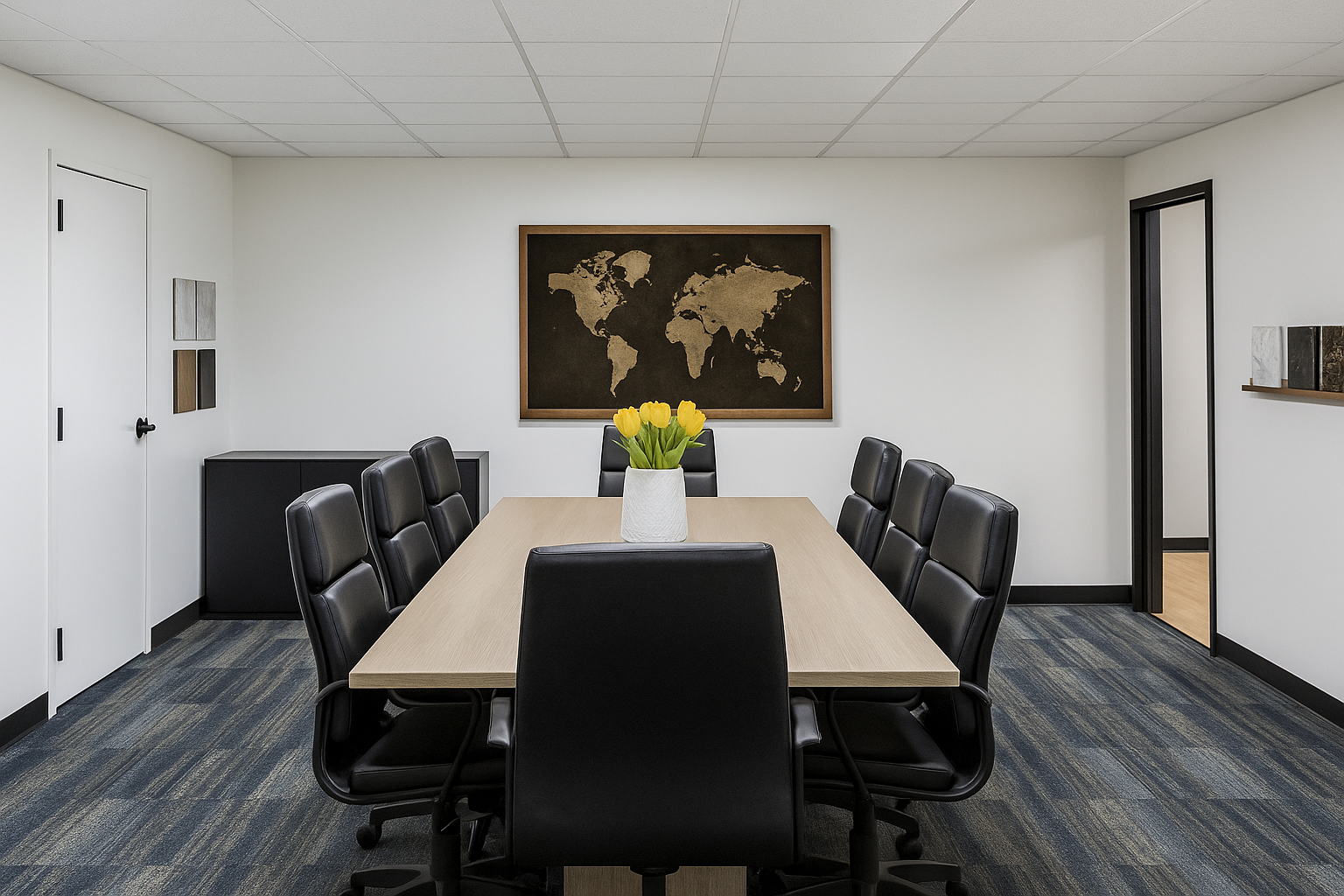Daylight robbery happens every morning at 9 AM sharp. Office wellness improves by 46% when employees receive optimal natural light exposure while office interior design using smart shading systems reduces eye strain complaints by 63% according to workplace health research. Yet millions of Canadian workers suffer through fluorescent-lit dungeons behind heavy curtains that block the very sunlight their bodies desperately need for optimal cognitive function and emotional regulation. Studies reveal that 47% of employees feel exhausted simply from lack of natural light access, creating a silent health crisis that proper shade selection could eliminate overnight.
Commercial interior designer teams who understand circadian wellness create environments supporting human biology while design-build office interior designer approaches integrate shading systems that enhance rather than hinder employee health through strategic light management solutions.
Orchestrating Natural Light for Biological Harmony
Proper shade selection enables precise circadian rhythm regulation while office interior design coordinates natural light exposure with employee biological needs rather than arbitrary aesthetic preferences that ignore human health requirements. Research demonstrates that workers receiving controlled natural light sleep 46 minutes longer nightly compared to those in windowless environments, directly improving next-day performance and reducing sick leave utilization by 23%.
Motorized shading systems enable dynamic light management while commercial interior designer expertise guides automated controls that follow solar patterns throughout the day rather than static window treatments that create all-or-nothing lighting scenarios. Professional teams understand that circadian wellness requires graduated light exposure beginning with bright morning stimulation, moderate midday levels, and gentle afternoon reduction that supports natural melatonin production.
Seasonal adaptation through programmable shade controls while interior design services coordinate systems that adjust automatically for changing daylight hours throughout Canadian climate cycles. Winter depression affects 15% of office workers, yet strategic shading that maximizes available natural light during shorter days can reduce these symptoms significantly. Interior designer expertise ensures shading solutions support year-round wellness rather than single-season comfort.
Blue light filtering through specialized shade fabrics while office furniture design coordinates with window treatments that block harmful UV rays while permitting beneficial wavelengths essential for vitamin D synthesis and mood regulation. Advanced shade materials can selectively filter light spectrums, creating optimal exposure conditions that support rather than compromise employee health.
Modular office furniture positioning enables optimal light utilization while source office furniture decisions coordinate with shading systems to ensure all employees receive adequate natural light exposure regardless of workspace location. Canadian office furniture manufacturers increasingly design products that work harmoniously with advanced shading systems for comprehensive wellness environments.
Creating Task-Specific Light Environments
Variable opacity shading enables diverse work activity support while office wellness strategies recognize that different tasks require different lighting conditions for optimal performance rather than uniform illumination that compromises specialized work requirements. Reading tasks perform best with diffused natural light, while computer work benefits from reduced glare conditions that prevent eye strain and headaches.
Glare elimination through strategic shade placement while office interior design coordinates multiple shading zones that prevent screen reflection issues affecting 78% of computer workers. Professional teams position different shade types throughout open workspaces, creating micro-environments that support various work activities simultaneously without compromising aesthetic cohesion.
Temperature regulation through thermal shading while commercial interior designer expertise prevents the productivity losses associated with uncomfortable workspace temperatures that distract employees from focus-intensive tasks. Advanced thermal shades can block up to 85% of solar heat gain while maintaining visual connection to outdoor environments essential for psychological wellness.
Privacy gradation through adjustable transparency while interior design services create flexible privacy solutions that adapt to changing confidentiality requirements without completely blocking beneficial natural light. Meeting areas benefit from shades that can quickly transition from transparent to opaque, supporting both collaboration and sensitive discussions.
Design build office interior designer coordination ensures shading infrastructure integrates seamlessly with HVAC systems, preventing the energy waste that occurs when cooling systems fight against solar heat gain from poorly managed windows. Professional integration achieves both wellness and operational efficiency objectives.
Personalizing Light Exposure for Individual Wellness
Individual light sensitivity accommodation through zone-specific shading while office wellness initiatives recognize that employees have varying tolerance levels for natural light intensity based on age, eye conditions, and medication effects that influence photosensitivity. Advanced shading systems enable micro-zone control that supports individual needs within collaborative workspaces.
Migraine prevention through controlled light exposure while interior designer expertise guides shading solutions that prevent the sudden light changes triggering headaches in susceptible employees. Gradual automated adjustments throughout the day prevent the jarring transitions that cause productivity disruptions and health complaints.
Medication interaction management through specialized filtering while office furniture design coordinates with shading systems that accommodate employees taking light-sensitive medications common in workplace demographics. Professional teams understand that comprehensive wellness requires accommodation for diverse health conditions affecting light tolerance.
Age-related vision support through adaptive shading while Canadian office furniture specifications include products designed to work with lighting systems that support older workers who require different illumination levels for optimal task performance. Demographic workplace changes require shading solutions that accommodate multigenerational teams effectively.
Modular office furniture enables personal workspace customization while source office furniture decisions coordinate with individual shading controls that empower employees to optimize their immediate environment for personal comfort and productivity requirements.
Environmental Control for Mental Health Support
Autonomy enhancement through user-controlled shading while office wellness programs recognize that environmental control directly impacts employee stress levels and job satisfaction scores. Workers report 34% higher comfort ratings when they can adjust their immediate light environment rather than accepting imposed conditions that may conflict with personal preferences.
Nature connection preservation through view-maintaining shades while commercial interior designer understanding of biophilic wellness ensures window treatments maintain visual access to outdoor environments essential for stress reduction and mental restoration. Complete view blocking eliminates the psychological benefits of nature connection that support workplace resilience.
Noise reduction through specialized acoustic shades while interior design services coordinate sound management with light control through advanced materials that address multiple environmental stressors simultaneously. Office environments with integrated acoustic-optical shading report 28% lower stress complaints compared to single-function window treatments.
Emergency preparedness through rapid shade adjustment while design build office interior designer planning includes safety considerations for quick visibility and egress requirements during emergency situations. Professional systems balance wellness optimization with safety compliance through automated emergency override capabilities.
Privacy anxiety reduction through graduated opacity controls while office interior design enables employees to adjust transparency levels based on task requirements and personal comfort rather than accepting fixed privacy levels that may increase workplace stress for introverted team members.
Smart Shading for Evolving Health Needs
Artificial intelligence integration for predictive light management while office wellness systems learn individual employee patterns and automatically optimize shading for personal circadian support rather than generic programming that ignores individual biological variations. Smart systems track productivity correlations with light exposure to refine personalized wellness optimization.
Health monitoring integration through environmental sensors while commercial interior designer expertise coordinates shading systems with air quality monitors and temperature sensors for comprehensive wellness management that addresses multiple environmental factors simultaneously. Advanced systems can adjust shading based on detected stress indicators and wellness metrics.
Seasonal affective disorder prevention through therapeutic light integration while interior designer coordination ensures shading systems work with specialized light therapy equipment that supports employees experiencing seasonal depression common in Canadian climates. Professional integration prevents conflicts between natural light management and therapeutic interventions.
Hybrid work support through remote shading control while Canadian office furniture coordination enables employees to pre-adjust their workspace environment before arriving, supporting wellness continuity between remote and office work patterns. Advanced systems maintain individual preferences regardless of workspace assignment changes.
Predictive maintenance through usage analytics while modular office furniture enables proactive replacement of shade components before failures that could disrupt carefully optimized wellness environments. Professional maintenance ensures consistent performance supporting long-term employee health outcomes.
Frequently Asked Questions (FAQ):
How do commercial interior designer teams determine optimal shade specifications for different office layouts while supporting individual employee wellness needs?
Commercial interior designer teams determine optimal shade specifications through comprehensive analysis of workspace orientation, employee demographics, and individual health requirements rather than generic shading approaches. They assess factors including seasonal light patterns, task lighting needs, and employee health conditions when developing personalized shading strategies. Office interior design professionals coordinate multiple shade types throughout workspaces creating micro-environments that support diverse wellness needs simultaneously. Interior design services analyze circadian rhythm requirements alongside productivity patterns to ensure shading systems enhance rather than compromise both individual health and collaborative workspace functionality through evidence-based light management solutions.
What specific advantages do smart shading systems provide for office wellness compared to traditional static window treatments?
Smart shading systems provide dynamic light management that adapts automatically to circadian rhythm requirements while traditional static treatments create all-or-nothing lighting scenarios compromising employee wellness. Professional automated systems follow solar patterns throughout the day supporting natural melatonin production and sleep quality improvements. Design build office interior designer coordination enables predictive adjustments based on weather conditions and seasonal changes rather than reactive manual controls. Office wellness initiatives using smart shades report 34% higher employee comfort ratings while reducing eye strain complaints through graduated light transitions that prevent jarring changes triggering headaches and productivity disruptions in light-sensitive workers.
How does modular office furniture coordination with shading systems enhance workplace wellness outcomes compared to independent furniture and window treatment selection?
Modular office furniture coordination with shading systems creates comprehensive wellness environments where furniture positioning optimizes natural light utilization while maintaining flexibility for changing workspace requirements. Professional integration ensures all employees receive adequate light exposure regardless of workspace assignments while supporting individual comfort preferences. Canadian office furniture designed for shading system coordination enables micro-zone control supporting personal health needs within collaborative environments. Interior design services coordinating furniture placement with shade controls achieve superior wellness outcomes compared to independent selection because integrated planning addresses both physical comfort and circadian health requirements through systematic environmental optimization supporting long-term employee wellbeing and productivity enhancement.
Key Takeaways
- Office wellness improves by 46% when employees receive optimal natural light exposure while smart shading systems reduce eye strain complaints by 63%
- Commercial interior designer expertise in circadian rhythm regulation enables automated shade controls that support natural melatonin production and sleep quality
- Design build office interior designer coordination integrates thermal shading with HVAC systems preventing energy waste while maintaining employee comfort
- Office interior design using variable opacity shading creates task-specific light environments supporting diverse work activities from reading to computer tasks
- Individual light sensitivity accommodation through zone-specific shading enables micro-zone control supporting personal health needs within collaborative workspaces
- Interior design services coordinating acoustic-optical shading address multiple environmental stressors reducing workplace stress complaints by 28%
- Modular office furniture positioning with optimal light utilization ensures all employees receive adequate natural light regardless of workspace location
- Canadian office furniture manufacturers design products working harmoniously with advanced shading systems for comprehensive workplace wellness environments
- Source office furniture decisions coordinate with individual shading controls empowering employees to optimize immediate environments for personal productivity
- Office wellness strategies recognize migraine prevention through controlled light exposure requires gradual automated adjustments preventing sudden triggering changes
Office shades represent critical wellness infrastructure supporting human biology rather than simple window coverings. Professional commercial interior designer teams who understand circadian science, individual health variations, and stress mitigation create environments that actively enhance employee wellbeing through strategic light management. When companies invest in comprehensive shading systems through experienced interior design services and coordinate installations through knowledgeable design build partnerships, they achieve measurable improvements in employee health, productivity, and satisfaction while reducing healthcare costs and absenteeism through workspaces designed to support rather than compromise human wellness throughout changing daily and seasonal cycles.

